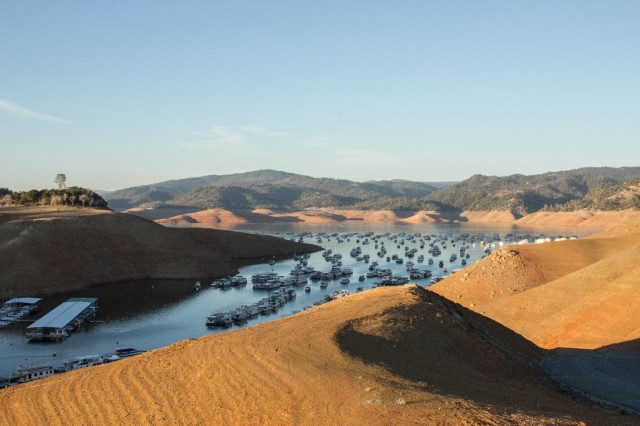
Here's the most dramatic development yet in California's Great Drought of 2013-14: The state Department of Water Resources announced today that for the first time in the 54-year history of the State Water Project, it can't promise to deliver a single drop of water to its city and farm customers.
The department's announcement said its allotment of water to agencies that serve 25 million people and irrigate about 750,000 acres of farmland will be cut to 0 percent. The department had already put its customers on notice that this year would be hard: before today, it was only promising a 5 percent allotment of the amount of the 4.2 million acre-feet of water that agencies have contracted for.
Some customer agencies still have a small amount of "carryover" water from previous years — water that had been allotted to the agencies but which they haven't used — and the state will allow them to tap those supplies.
The Department of Water Resources decision came at the same time the California Water Resources Control Board announced that it's approving emergency measures to preserve the state's shrinking water supplies.
The board said it has approved a petition from state and federal water managers to reduce the amount of water flowing out of the Sacramento-San Joaquin Delta in February. That means less water will need to be released from upstream reservoirs to preserve higher flows mandated by earlier water-quality rulings.